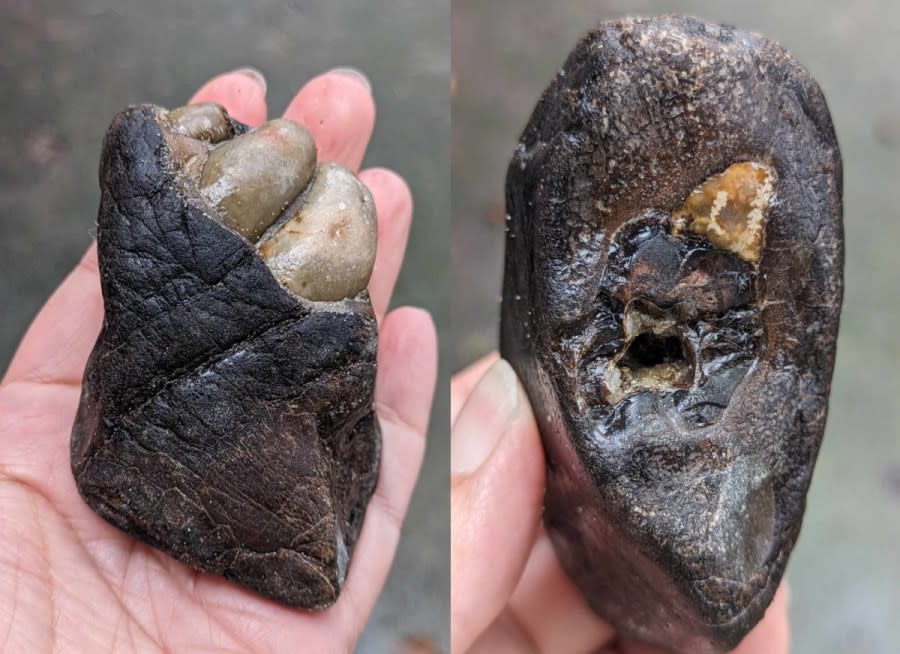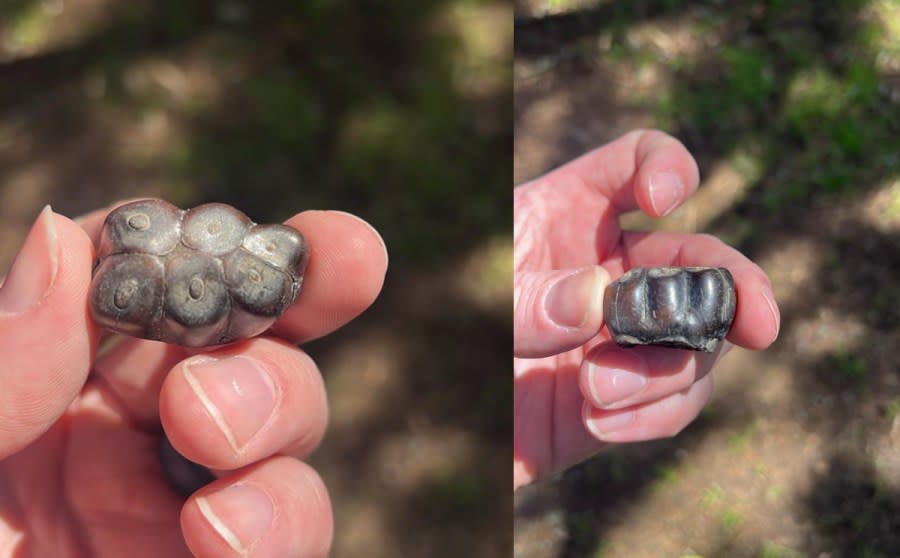Teachers find fossils of extinct hippo-like mammals on the Oregon Coast
PORTLAND, Ore. (KOIN) — Rare fossils that likely came from extinct hippo-like mammals, which existed between 21 and 23 million years ago, were recently discovered by two different beachcombers on the Oregon Coast.
Lane County preschool teacher Amariah Jacobs told KOIN 6 News that she found her toothy specimen sitting on a pile of cobblestone while hiking on an undisclosed beach on March 25.
“I like to watch the sunrise and then clean up the beaches of trash,” Jacobs said. “My husband and I each bring a backpack and a pocketknife so we can pack out derelict fishing equipment. We are also happy to find interesting or unusual agates.”
Photos of a rare, 20-million-year-old fossil found on the Oregon Coast on March 25, 2024. (Photos by Amariah Jacobs) A similar fossil found days later near Lost Creek State Recreation Site. (Photos by David Thomas)
Six days later, a high school teacher from Grant County Washington found a similar fossil while camping on the beach in the Lost Creek area. It’s unclear if there is any connection between the timing of the finds.
Smithsonian National Museum of Natural History Collection Services Manager Matthew Miller told KOIN 6 News that both fossils are likely teeth and jawbones from desmostylians. Desmostylians, he said, are hippo-like creatures that existed in Oregon during the Miocene epoch — a time when ancient rhinos, camels, elephants and saber-toothed cats roamed North America.
“Desmostylus belonged to a group of animals known as the desmostylians,” Miller said. “While they were hippo-like in appearance and habit, they are not related to hippopotamus. The group was entirely herbivorous and ate plants growing in shallow seas.”
Semiprecious stone shaped like human heart found on the Oregon Coast
While Miller was able to provide an educated guess from looking at photos of the fossils, he said that more research would be necessary to identify the specific species of desmostylian.
“Based on Amariah’s images the specimen is in decent condition,” he said. “It likely was once part of an intact skull but the ocean waves likely broke it apart. From the rounded nature of the specimen, it was likely broken off the skull many decades ago. The other tooth images you included also appear to be a desmostylian. I hesitate to identify it any further without additional information about the collecting area.”
Tillamook woman catches potentially record-breaking eel-like fish
Both teachers said they hope to get in contact with local experts who may want to study the fossils. KOIN 6 News attempted to contact fossil experts with the University of Oregon and Southwestern Oregon Community College about the finds but did not receive a response.
For the latest news, weather, sports, and streaming video, head to KOIN.com.



